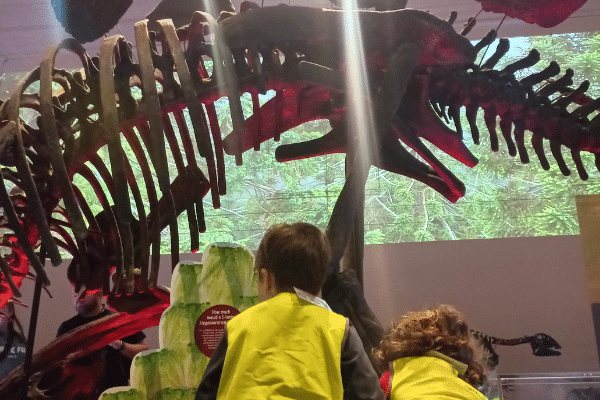
Community connections
Fran Bastion explores the way in which children’s connectedness and belonging with people, country and place helps them to learn ways of being which reflect the values, traditions and practices of their families and communities.
By Fran Bastion, KU Learning and Development
June 2021
Young children develop in an environment of relationships, with a child’s community providing a vital relationship context for their learning and development. For children, a sense of community brings significant connection to people and places both in the community within the service, as well as the wider community around us. These connective threads of experience occur as part of a quality early learning experience.
Children’s connectedness and varied ways of belonging with people, country and communities helps them to learn ways of being which reflect the values, traditions and practices of their families and communities. This learning then transforms the ways they interact with others.
ACECQA’s National Education Leader, Rhonda Livingstone, suggests that creating a ‘sense of community’ is recognised through four key traits:
- Belonging: Feeling you are part of the community.
- Influence: Feeling you ‘matter’ and can make a difference.
- Integration and fulfilment of needs: Feeling your needs can be met.
- Shared emotional connection: Feeling of an attachment through shared experience, place or history.
It is this sense of community that fuels the concept of belonging and nurtures the identity of the service and each child within the service community. It builds a culture of shared endeavour, collaborative risk taking and substantive opportunities for creating and consolidating relationships with people, place, materials and ideas that amplify an image of the child that is rich in potential. It can be easy for early childhood services to become isolated and insular. However, children in our care deserve to experience the rich cultural influences of a variety of people, places and information from diverse and intentional opportunities to participate in thriving communities.
Opportunities to generate a shared understanding of children as civic participants, agents of change and rights holders can be achieved through contribution and participation in community life.
- How visible are our children in our communities and neighborhoods?
- How can we support and encourage children to be seen as active participants in local communities?
- How do we raise the profile of early education and the image of child?
Seeking out and assessing meaningful relationships with community may address the challenge of engaging our youngest citizens in democratic life as both participants and contributors in the everyday life of their community. These might include the following elements as a framework for research and practice:
- Intimacy: Will this relationship include care and concern?
- Continuity: Will this relationship be developed through opportunities for multiple contacts over time?
- Complexity: Will this relationship have the potential to engage children’s curiosities and imagination?
- Identity: Will this relationship offer the child insight into his/her sense of place and belonging?
- Diversity: Will this relationship stretch the child’s understanding of human diversity?
- Reciprocity: Will this relationship challenge and/or strengthen the image of the child?
If children are participating directly in a community, then they are likely to create and sustain networks that have meaning to the community. This is often evidenced through the shared tending to community gardens, bush care programs, community sponsored events, art projects, contributions to child friendly city planning and regular visits to aged care facilities and local school communities.
There is an imperative that the educative team develop a sound knowledge of place. Knowing the local community, exploring and experiencing the diverse offerings that are unique to the locality.
- What is the urbanscape?
- What geographical elements enrich the landscape?
- What community resources support civic membership?
- What cultural networks, agencies, organisations are accessible?
Engagement with community stakeholders enables social connections with people and place. We must therefore draw on and strengthen the circles of community that both radiate from and give shape to the curriculum we craft for children.
Want to know more?
To learn more about supporting children in their community and the full range of KU Learning and Development courses and events, click the below button.
References
https://wehearyou.acecqa.gov.au/2018/07/19/it-takes-a-village-to-raise-a-child-the-role-of-community
https://beyou.edu.au/stories/learning-community-stories
http://thespoke.earlychildhood…
Nimmo.J (2002) Nurturing the Spirit to Teach, Commitment, community and emergent curriculum. Australian Journal of Early Childhood.
Nimmo. J (2008) Young Children’s Access to Real Life. Contemporary Issues in Early Childhood
